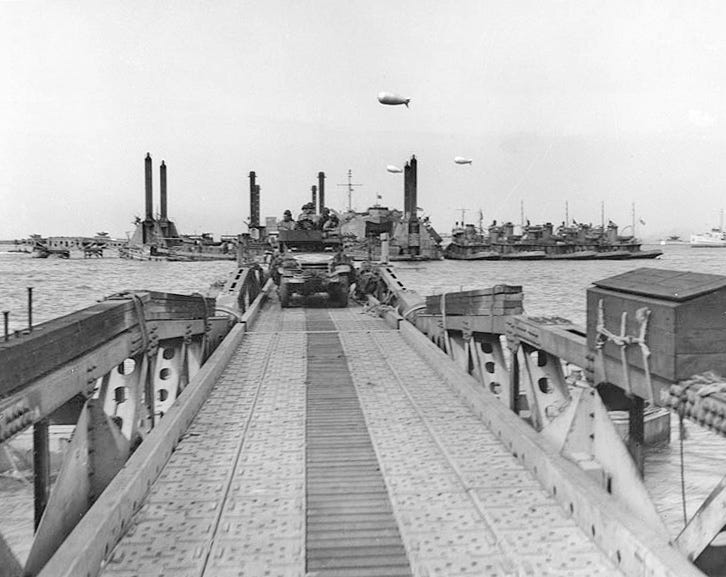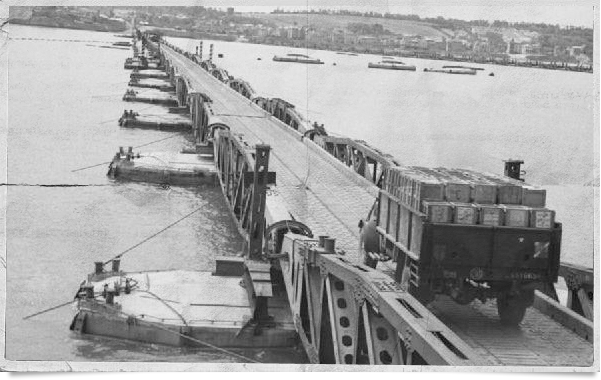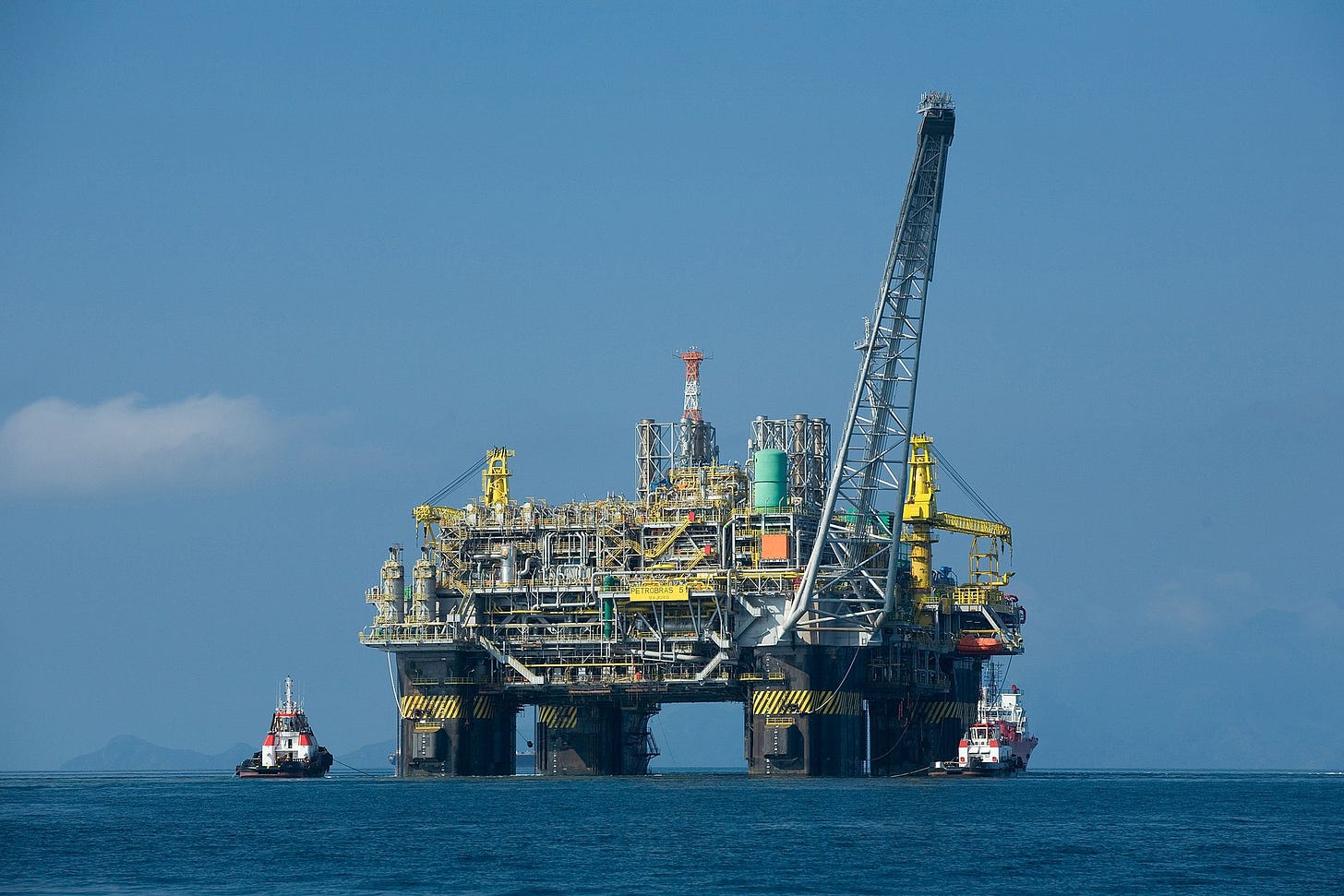Transportable loading docks and harbors
As the US economy came back to life in 2021 with the end of the emergency phase of the pandemic, the port in Los Angeles, California became a major bottleneck.
https://spectrumnews1.com/ca/la-west/transportation/2022/05/17/bottleneck-at-la-port-easing-as-dock-worker-negotiations-continue
LOS ANGELES — Last year, and early into 2022, the Port of Los Angeles emerged as a major bottleneck in the U.S. supply chain.
At its peak, cargo ships could be waiting nine days or longer to be unloaded and shipped off to stores.
Could new harbors quickly be put into place in an emergency?
This is what the British military did in WW2.
https://en.wikipedia.org/wiki/Mulberry_harbour
Mulberry harbours were two temporary portable harbours developed by the British Admiralty and War Office during the Second World War to facilitate the rapid offloading of cargo onto beaches during the Allied invasion of Normandy in June 1944. After the Allies successfully held beachheads following D-Day, two prefabricated harbours were taken in sections across the English Channel from southern England with the invading armies and assembled off Omaha Beach (Mulberry "A") and Gold Beach (Mulberry "B").
The Mulberry harbours were to be used until major French ports could be captured and brought back into use after repair of the inevitable sabotage by German defenders. The Mulberry B harbour at Gold Beach was used for 10 months after D-Day, and over 2.5 million men, 500,000 vehicles, and 4 million tons of supplies were landed before it was fully decommissioned.
The loading docks for these harbors would be semi-submersible platforms.
https://en.wikipedia.org/wiki/Semi-submersible_platform
A semi-submersible platform is a specialised marine vessel used in offshore roles including as offshore drilling rigs, safety vessels, oil production platforms, and heavy lift cranes. They have good ship stability and seakeeping, better than drillships.
A semi-submersible obtains most of its buoyancy from ballasted, watertight pontoons located below the ocean surface and wave action. Structural columns connect the pontoons and operating deck.[2] The operating deck can be located high above the sea level owing to the good ship stability of the design, and therefore is kept well away from the waves.
With its hull structure submerged at a deep draft, the semi-submersible is less affected by wave loadings than a normal ship. With a small water-plane area, however, the semi-submersible is sensitive to load changes, and therefore must have their onboard mass trimmed to maintain stability. Unlike a submersible, a semi-submersible vessel is not supported by resting on the seabed.
Semi-submersible vessels are able to transform from a deep to a shallow draft by deballasting (removing ballast water from the hull), thereby becoming surface vessels. Usually they are moved from location to location in this configuration. The heavy lift vessels use this capability to submerge the majority of their structure, locate beneath another floating vessel, and then deballast to pick up the other vessel as a cargo.
Moreover, this transportable loading dock would be fully automated.
That does not mean there won’t be people working on it because humans would serve as backup.
For example, commercial airplane cabins once had a pilot, a copilot, and a navigator.
The navigator position became obsolete because of technology, and so it was eliminated.
The copilot might someday become obsolete, but his position would still exist because he would serve as a backup or “spare tire” in case the pilot becomes incapacitated.
Eventually, pilots too will eventually become obsolete, but they might still serve as a human backup system in case the computers crash.
Humans serving as backup systems might become much of the future of labor.
(“They also serve who only stand and wait.”)
https://unitingaviation.com/news/safety/future-flight-pilotless-aircraft/
This year's graduating cadre of young cadets could possibly be the last to enjoy full, four-decade careers as traditional commercial airline pilots. By the time they are ready to retire, around 2060, pilot jobs as we currently know them will “start to become obsolete,” according to Richard de Crespigny.
The purpose of a transportable loading dock is not to deal with supply-chain disruptions but rather emergency preparation.
For example, roughly every 250 years the Pacific Northwest is struck by a coastal earthquake, which is followed 20 minutes later by a tsunami.
The last Cascadia earthquake and tsunami was in 1700.
Much of the transportation infrastructure of the Pacific Northwest predates more recent building codes that anticipate a Cascadia earthquake.
https://en.wikipedia.org/wiki/1700_Cascadia_earthquake
The idea here is that there would be transportable harbors and loading docks operating in northern California or that could be towed north to Oregon and Washington state after the inevitable Cascadia event.
(Will the Cascadia Earthquake be the Worst Disaster North America’s Ever Seen? | Weathered, PBS Terra)







